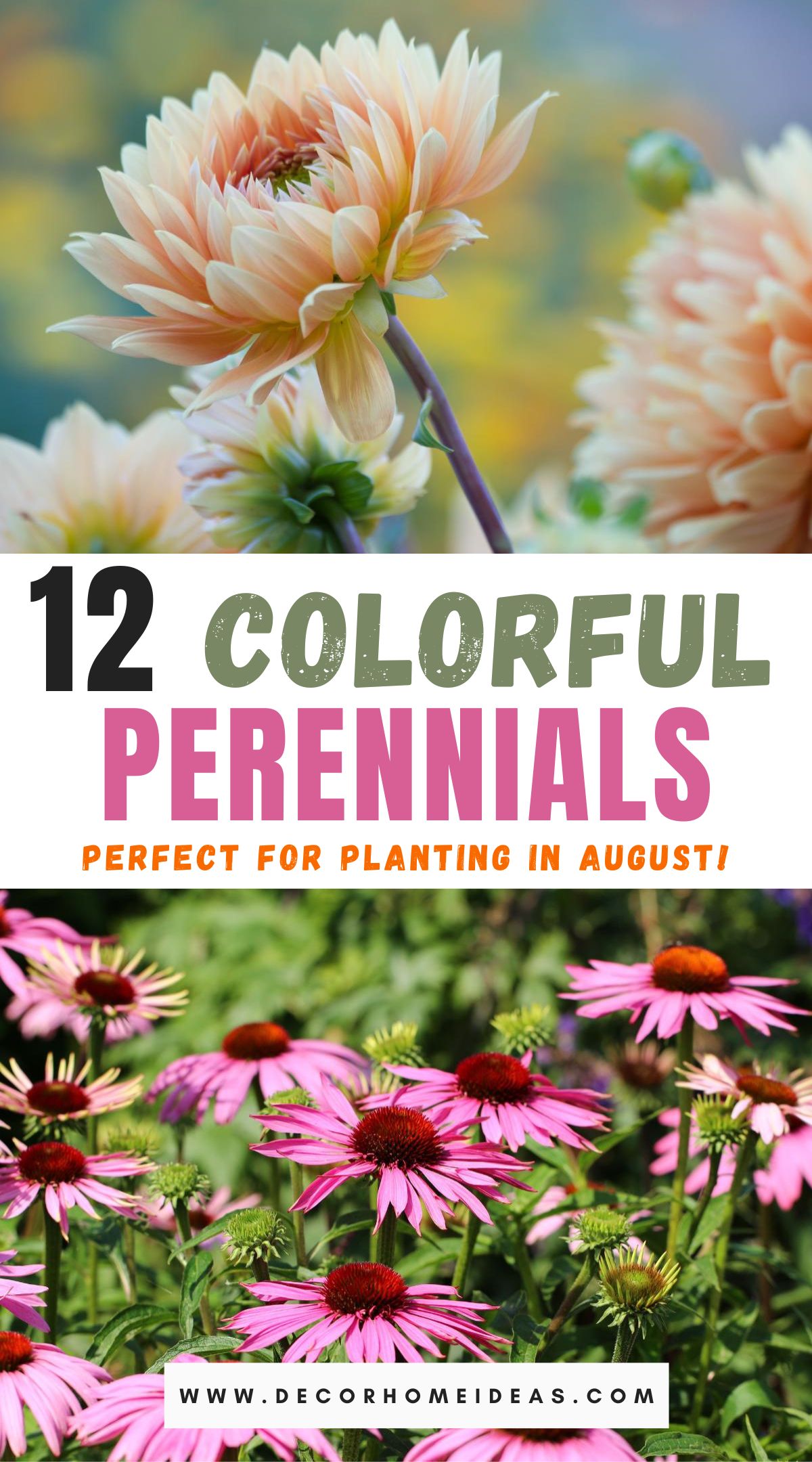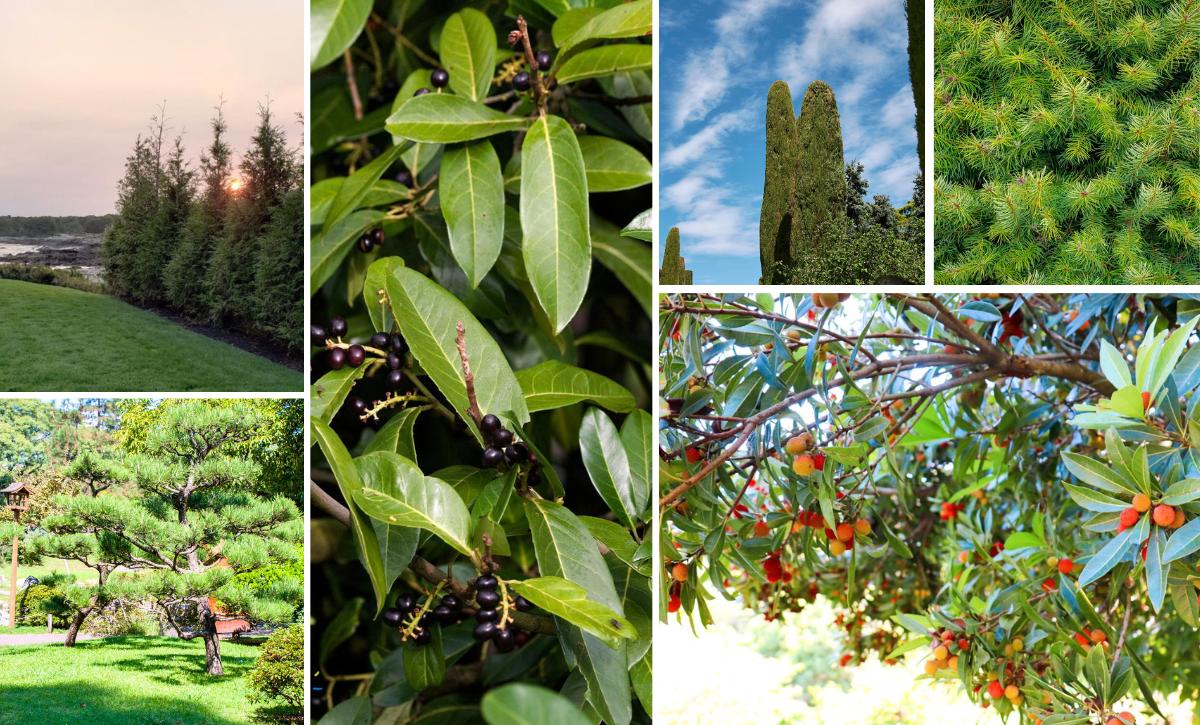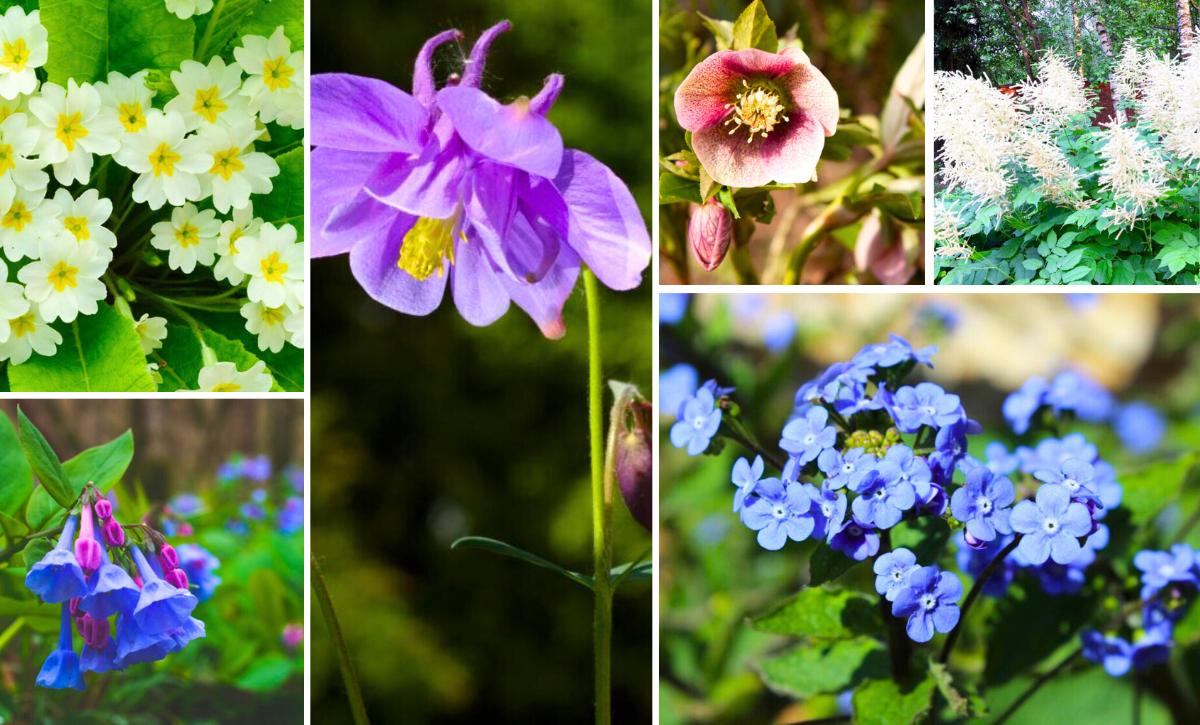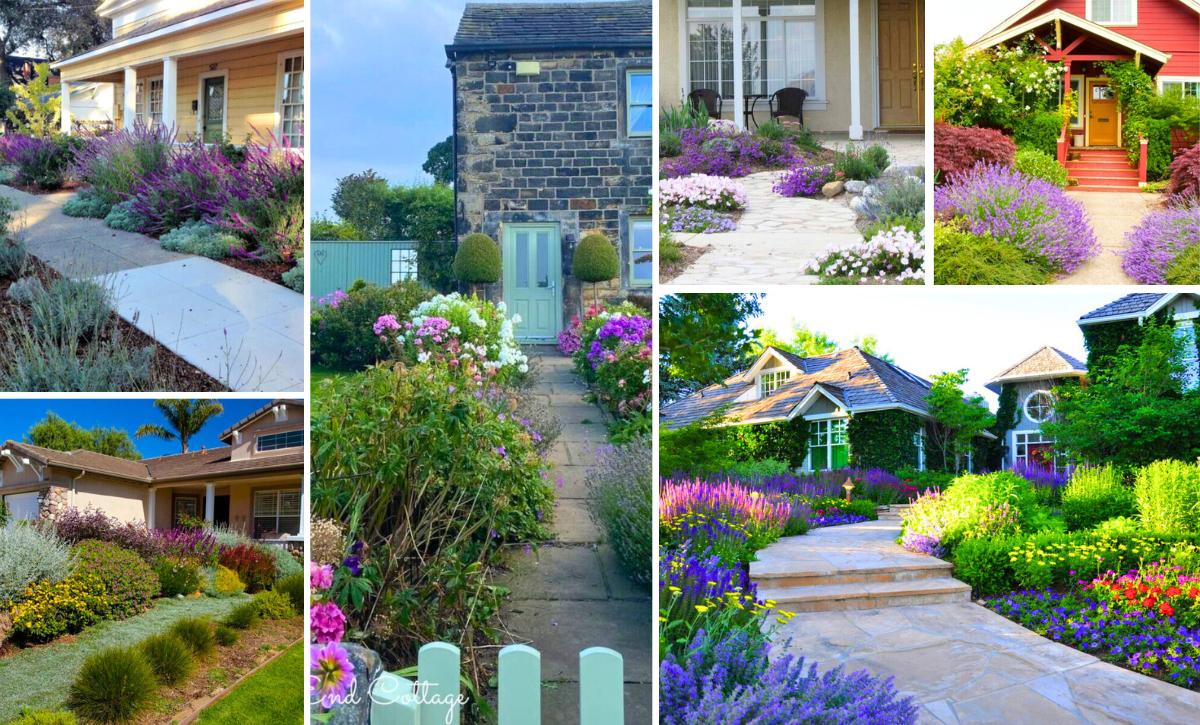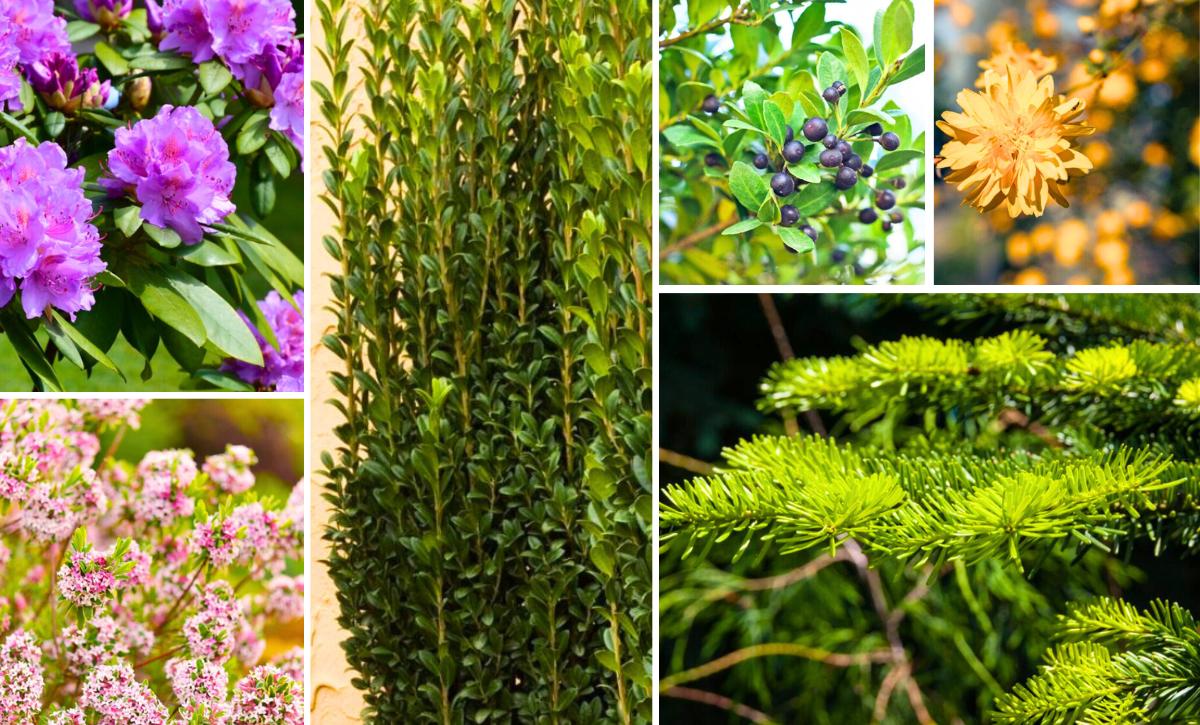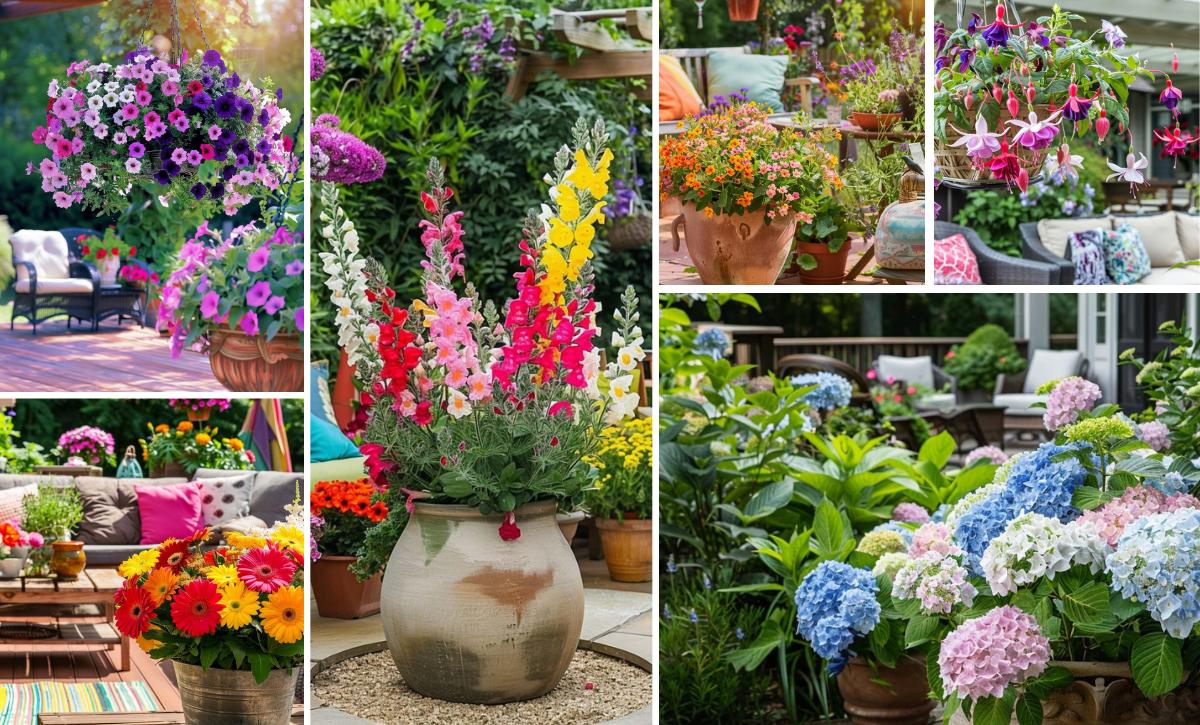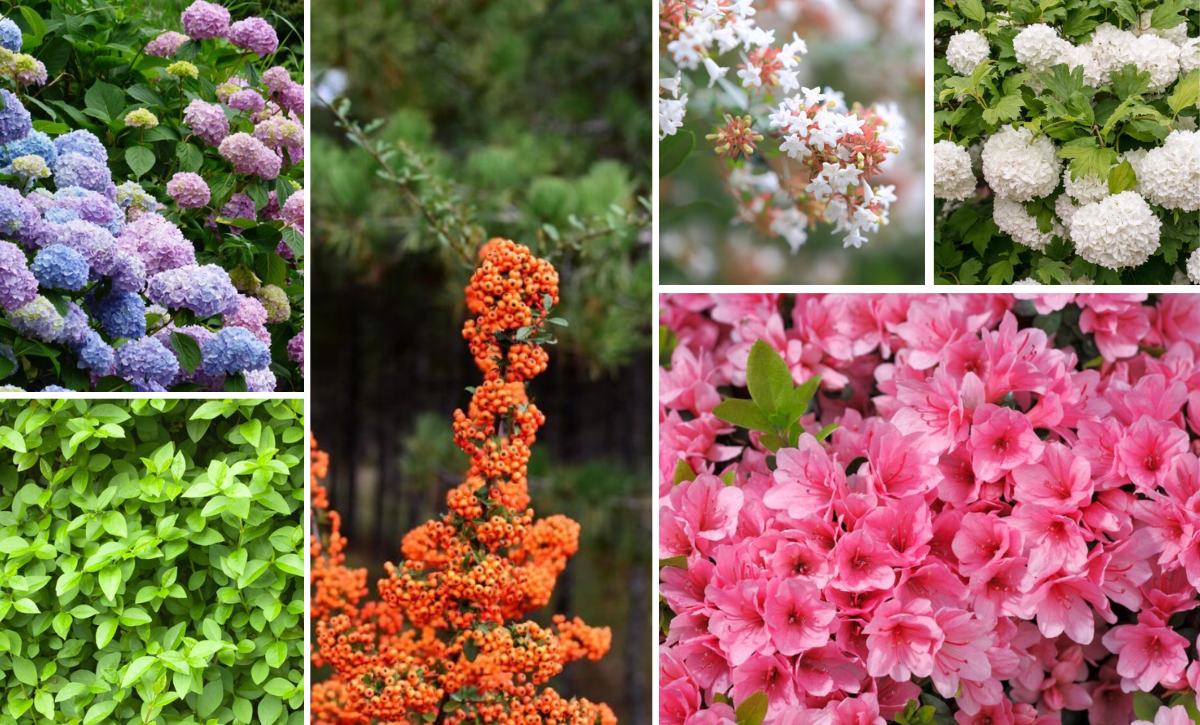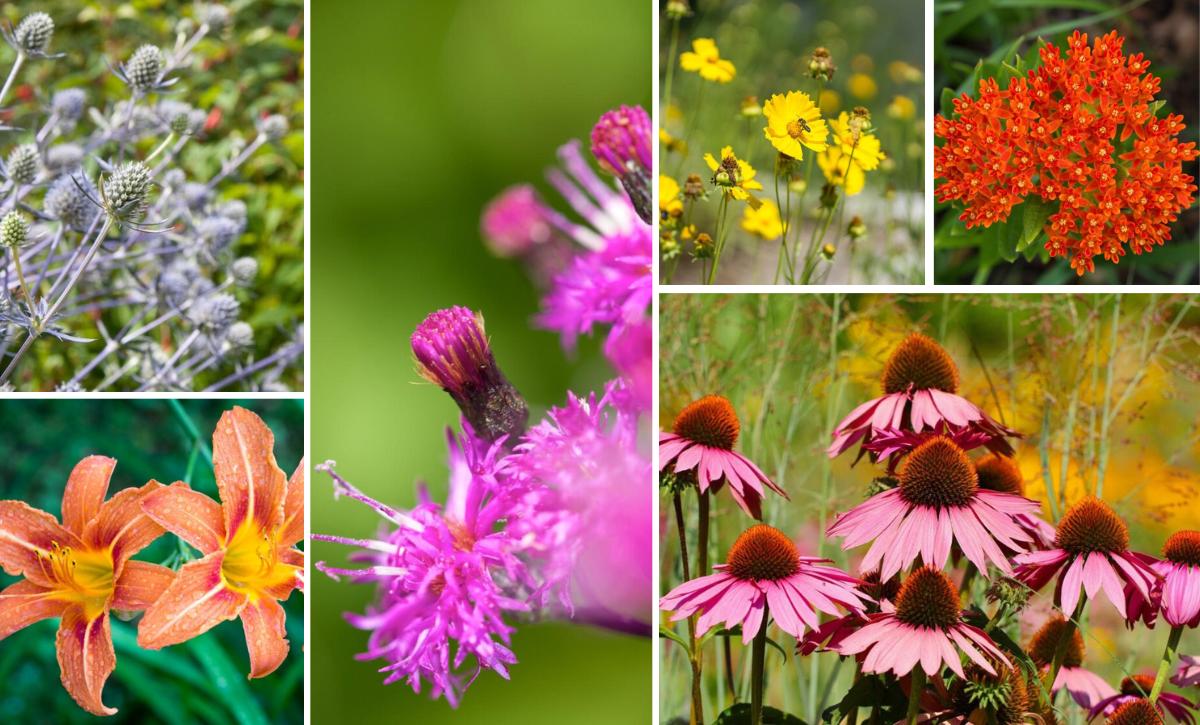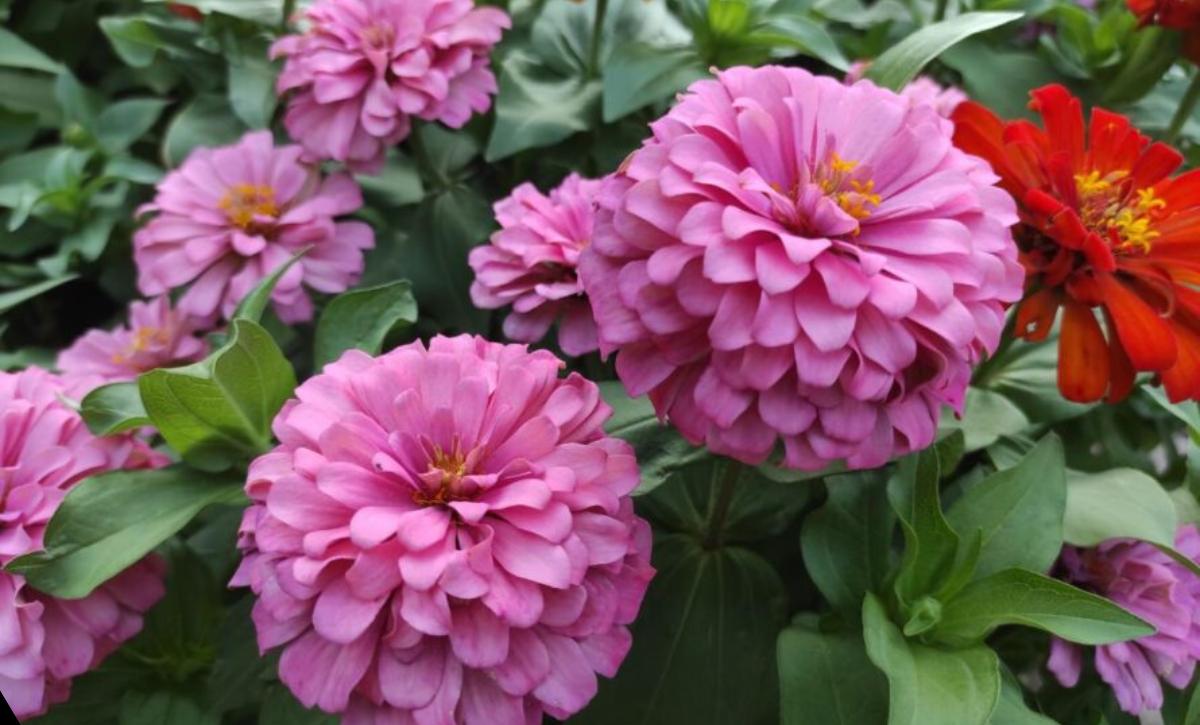Summer is a season when most gardeners are looking to reap what they sow, but as the weather gets warmer, you’ll find out that not all plants are suited to withstand the challenges that come with the heat.
Many plants suffer from heat stress, which increases the evaporation rates and can also interfere with moisture. This may lead to some of your plants wilting, shading leaves, or completely drying up, which may leave your once beautiful garden a shadow of its former self.
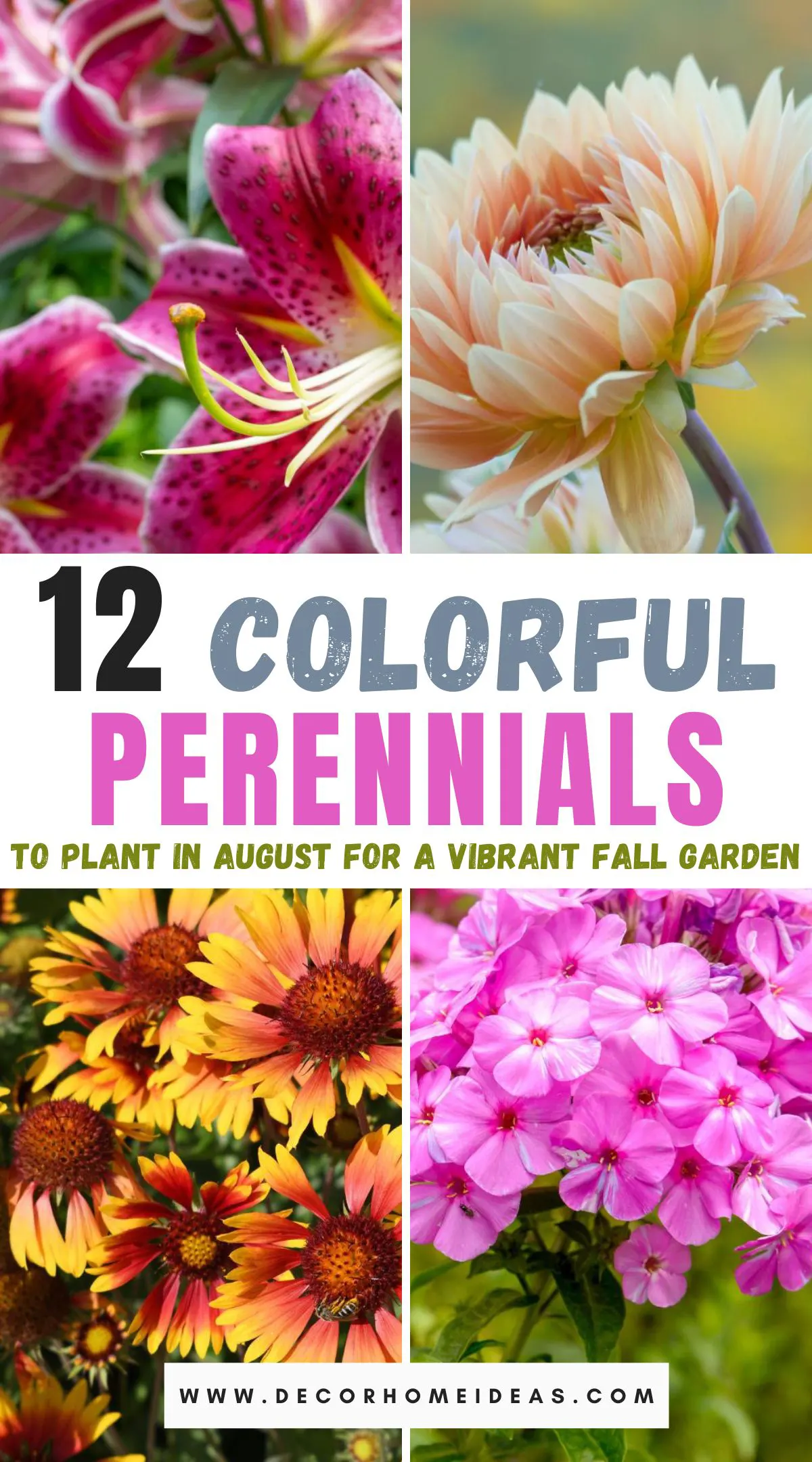
Choosing the right blooming perennials is crucial to ensuring that your garden has a steady supply of vibrant blooms during the summer and fall seasons.
Here are 12 perennials that you can grow this August for a vibrant fall garden.
Take a look!
1. Oriental Lily
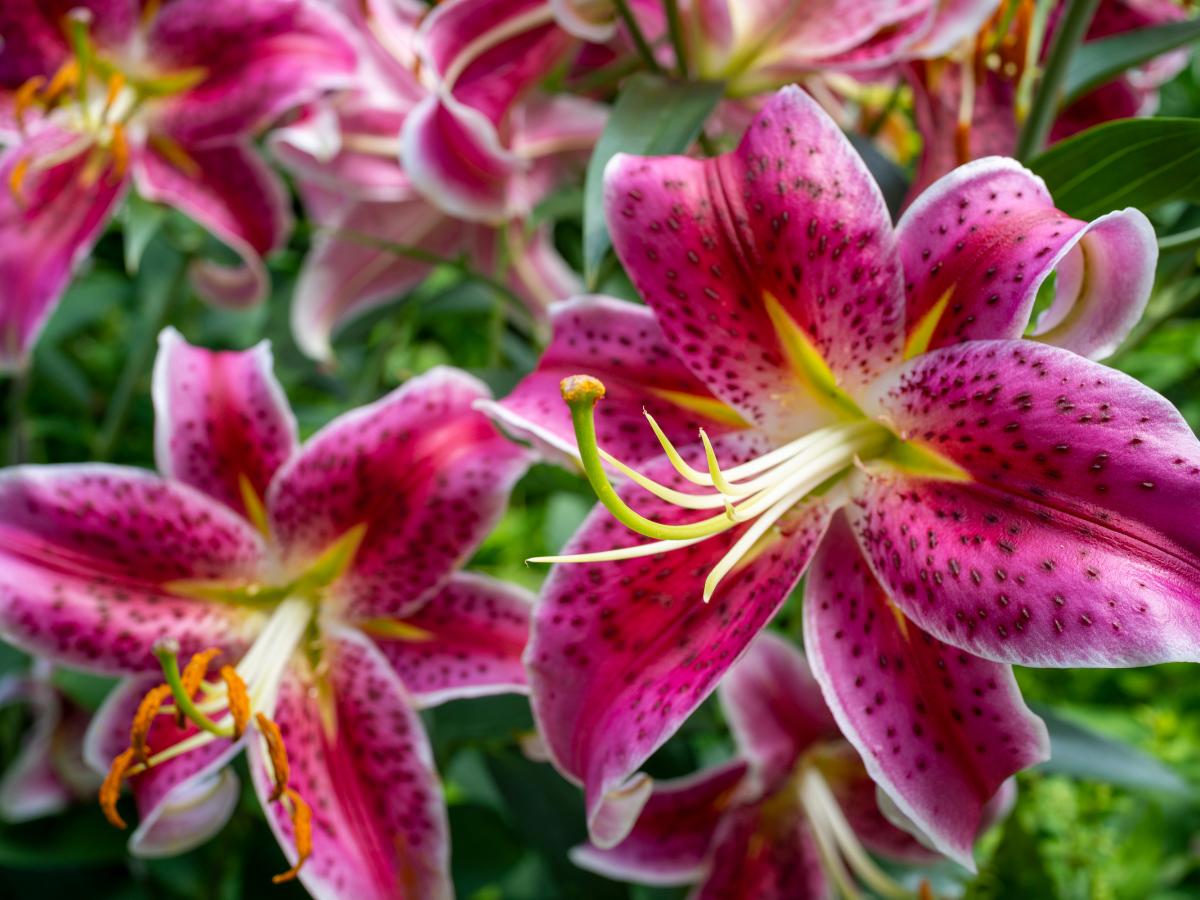
Known for their baby pink color and exotic fragrance, oriental lilies will bring beauty and charm to any space, whether it’s summer or fall.
This charming perennial grows to about 4 to 6 feet and produces beautiful tall stalks of star-shaped blooms. Other than pink, the oriental lily also comes in colors such as red, cream, white, yellow, and orange.
To add to their beauty, the flowers are splashed with spots or dark stripes. The plant will thrive in a sunny or partially shaded area with well-drained soil. Ideal growth zones are between zones 5 – 9.
2. Chrysanthemum
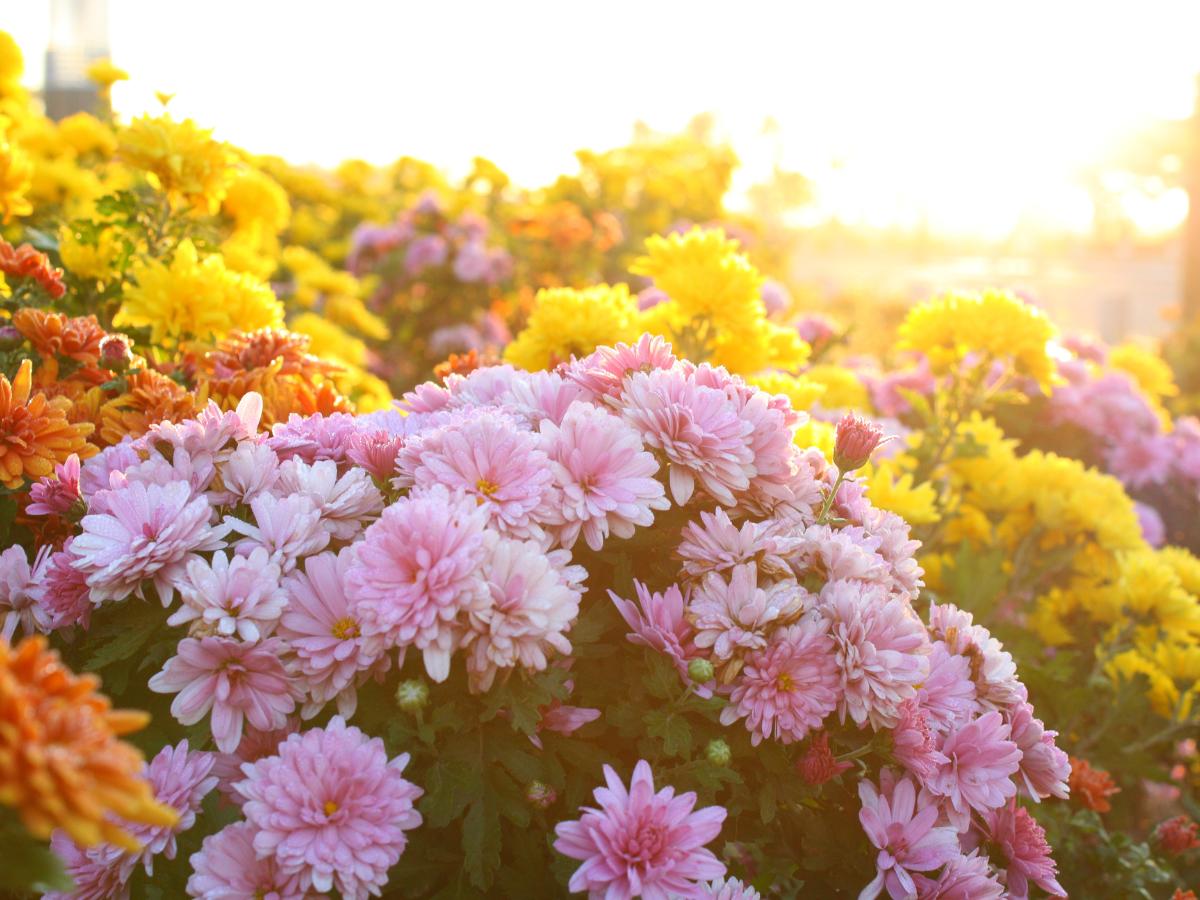
If you’re looking for a flowering plant with the ideal fall color, then Chrysanthemum will do the trick. While they come in a variety of colors, sizes, and flower forms, one of the best chrysanthemum colors and by far the most grown during fall is orange.
These flowers will elevate the look of your space, whether grown alone or mixed with other flowering plants. You can either grow them directly in the soil or use planters and containers.
Chrysanthemums thrive in a sunny area; however, they’ll need to be watered as soon as the soil dries up. In colder regions, it’s advisable to cover the ground with mulch for newly planted chrysanthemums to protect them from the cold.
3. Phlox Paniculata
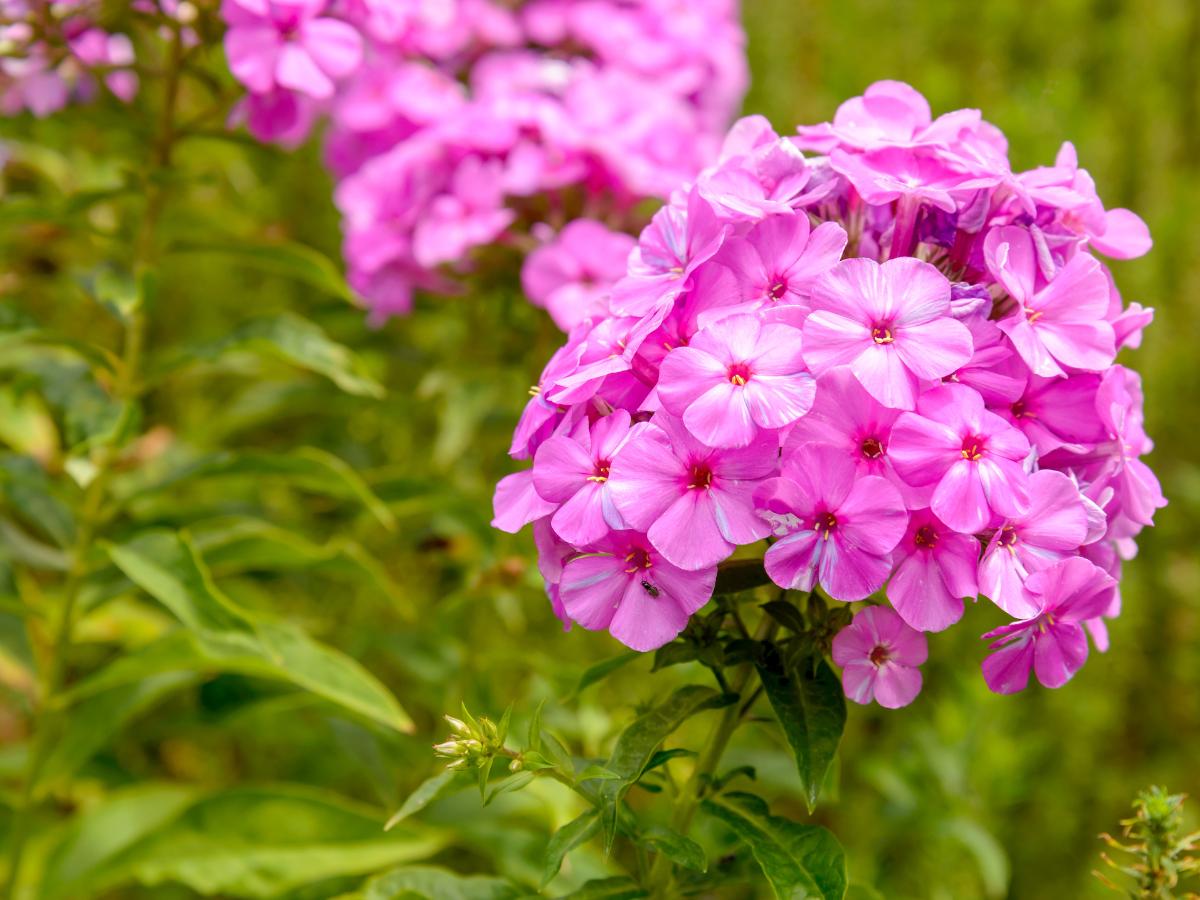
Also known as the peppermint twist, the phlox paniculata is one of the most grown perennials in American gardens. The plant is known for its hardy flowers, nice fragrance, and stout structure.
This hardy plant is mainly grown for its cloud of blooms that can change or transform the look of any space. The plant will thrive in full or partial sun and prefers well-drained soil. As for the ideal growth zones, phlox paniculata thrives in zones 4 – 8.
4. Japanese Anemone
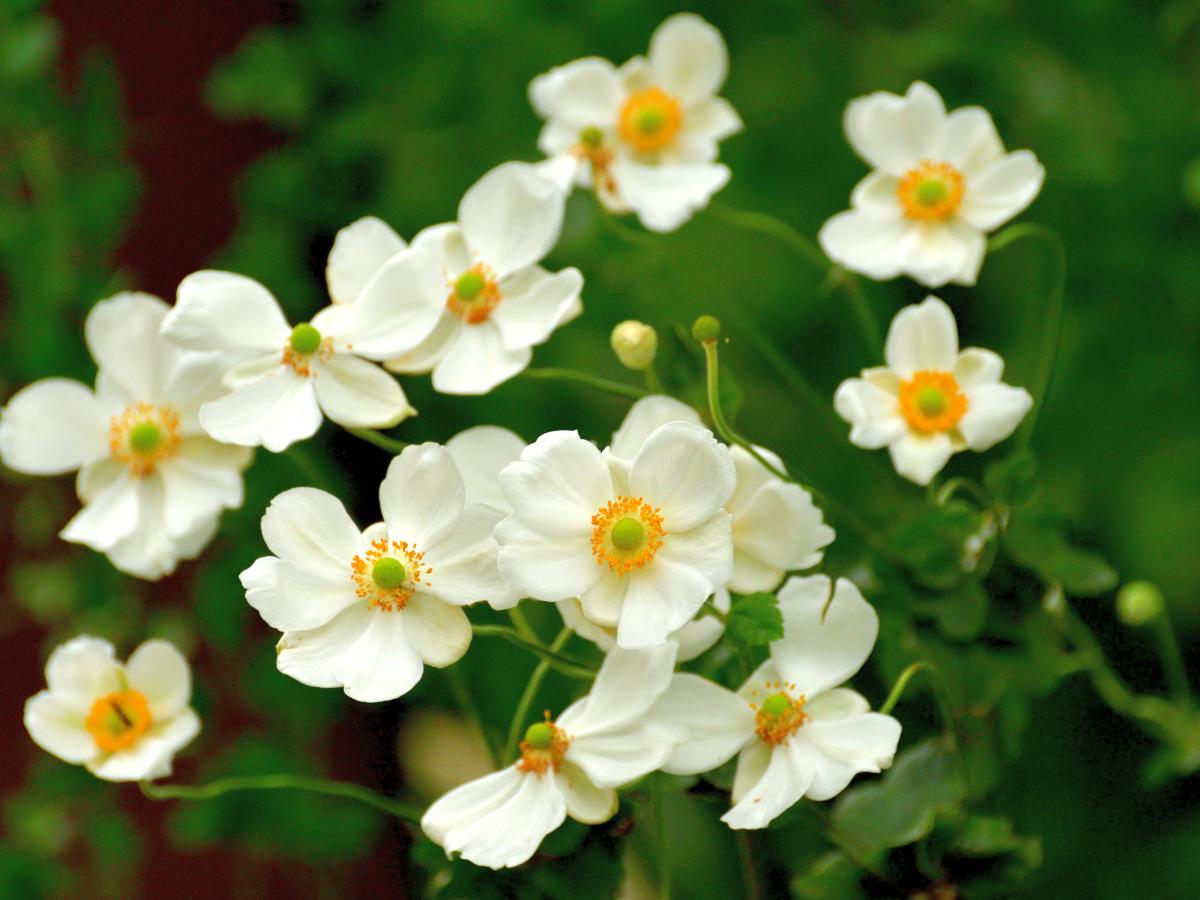
With tall, elegant stalks and beautiful pink or white flowers, the Japanese Anemone is a must-have perennial in your fall or summer garden.
This eye candy grows to about 2 to 4 feet and combines well with other fall bloomers, such as Chrysanthemums and asters. Even though they prefer a sunny spot, Japanese Anemones will also thrive in partial shade.
As for the soil, these plants will do well in rich organic soils, so add some compost or mulch with leaves every once in a while. Japanese anemones are fast groundcovers, so always keep an eye on them to ensure they don’t become invasive to other species.
5. Balloon Flower
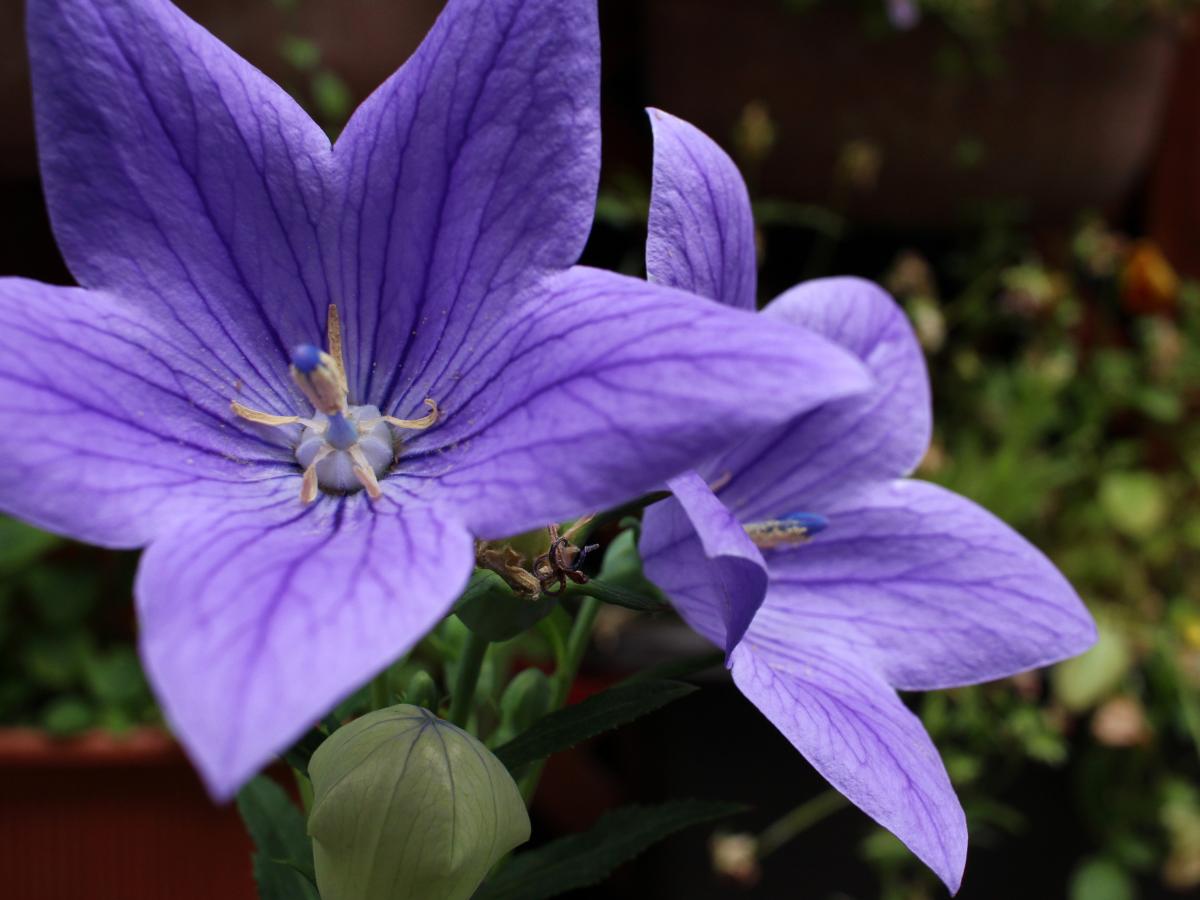
The Platycodon grandiflorus, commonly known as the balloon plant, is an eye-catching perennial whose blooms give a cheerful, lively color in the summer or fall.
The plant is named after the fact that the young blooms swell like balloons before blossoming into bell-shaped flowers. Flower colors include blue, pale pink, and white.
Flowering time is from June to late August. The balloon flower is easy to care for, and other than well-draining soil, a sunny post, and medium moisture, it’s quite self-sufficient. The ideal hardiness zone for the plant is between zone 3 – 8.
6. Sedum
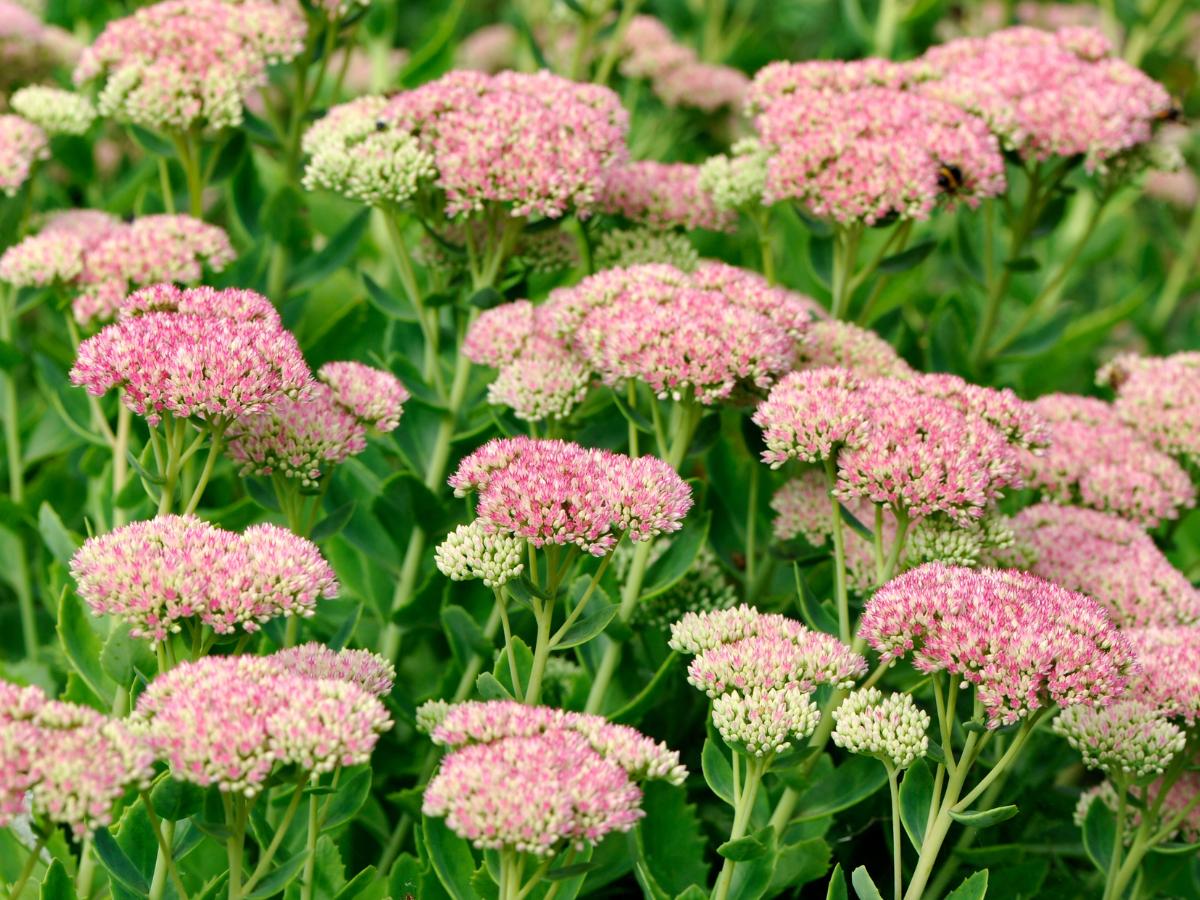
If you have a busy schedule or rarely have time to check on your plants, then sedum is one of the most beautiful plants that you can grow. This hardy plant is virtually indestructible and will survive in almost all kinds of weather.
The plant has fleshy foliage that helps it retain water and makes it largely drought-tolerant. Other than that, it also comes in a variety of colors, so you can choose one that suits your tastes. Grow the plant in a sunny spot, water it, and watch it flourish.
Sedum grows to about 24 to 36 feet, and other than its attractive foliage, it also produces beautiful pink or red flowers. Its ideal hardiness zones range from zone 3 – 8.
7. Helenium
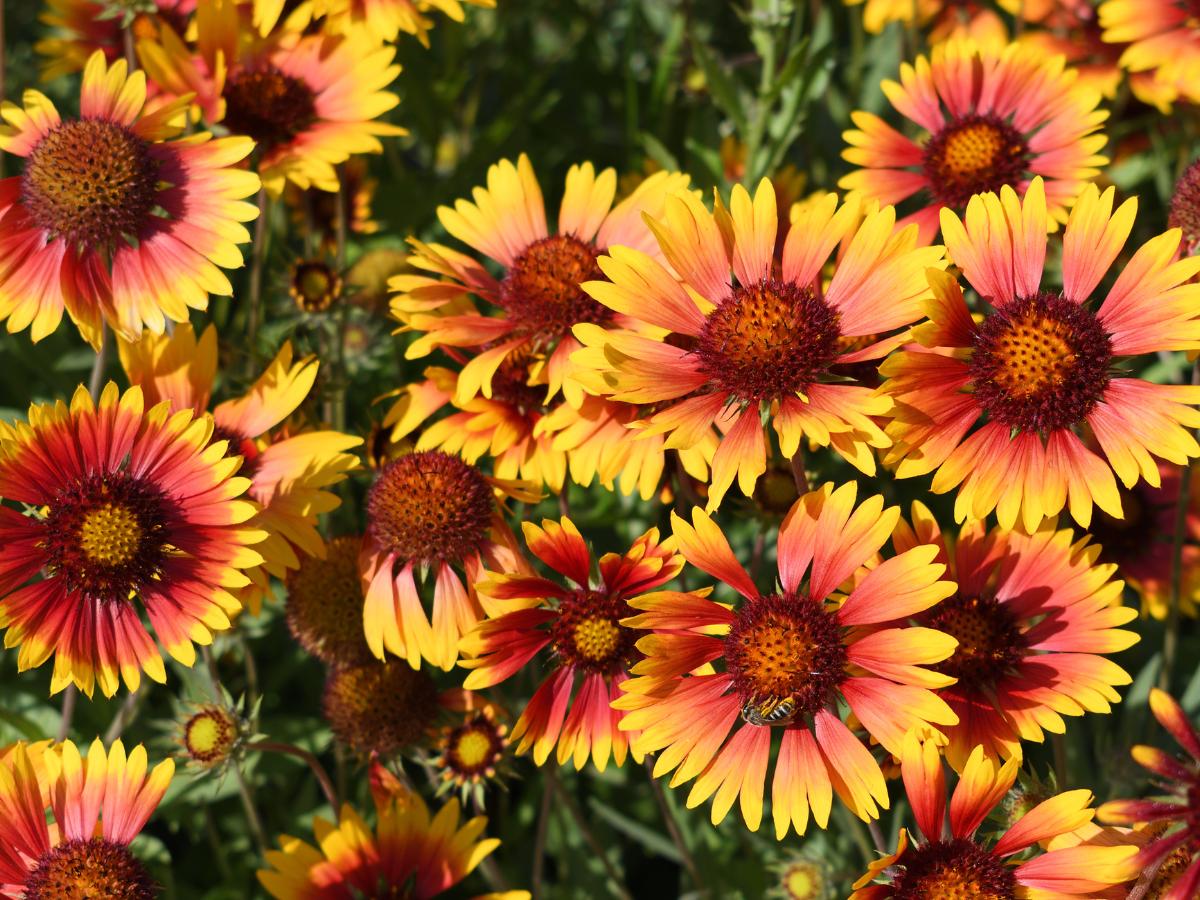
If you’re looking to really transform your space with gorgeous fall color, the helenium is a plant you can’t afford to miss out on. Not only is it super easy to grow, but these perennials also produce flowers in deep shades of orange, red, and blue color, making it the perfect addition for the fall season.
The plant grows to about 3 to 4 feet and will do well even with minimal watering.
Some gardeners shy away from growing this plant for fear that it may attract ragweed; however, this is a common misconception. Helenium blooms at the same time as ragweed, and in many cases, it ends up taking the blame even though the growth of the two plants is mutually exclusive.
Besides its beauty, helenium will also attract pollinators, from which other plants can benefit.
8. Nippon Daisy
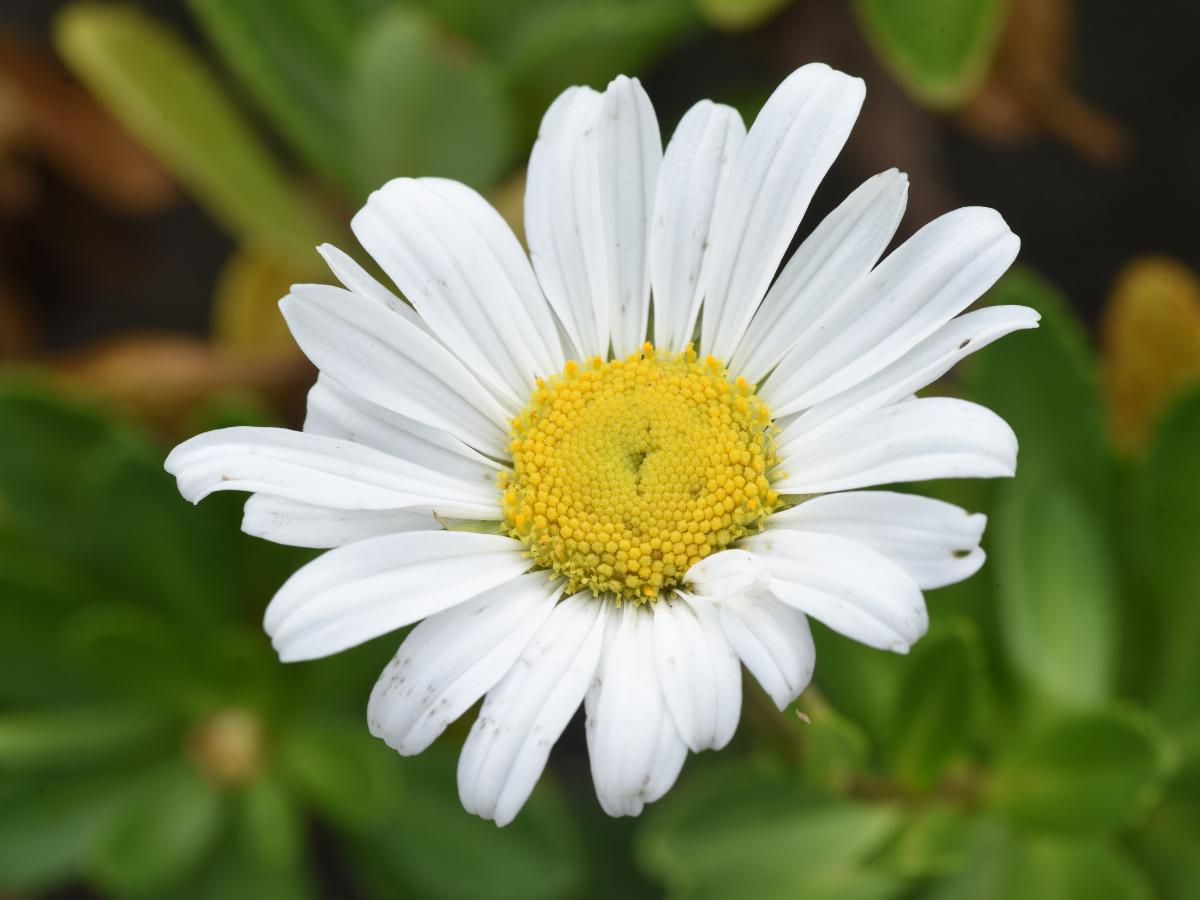
Also known as the Montauk Daisy, this plant will make a good addition to your fall garden since it blooms late in the season, adorning your space with peaky white flowers. It grows to about 24 to 36 inches and thrives in a sunny spot with well-draining soil.
Other than being a décor solution for fall, Nippon Daisy can also tolerate cold weather and will retain its flowers and leaves unless the weather gets to a hard freeze. Additionally, its nectar-rich flowers will attract butterflies and other pollinators to your garden.
9. Dahlia
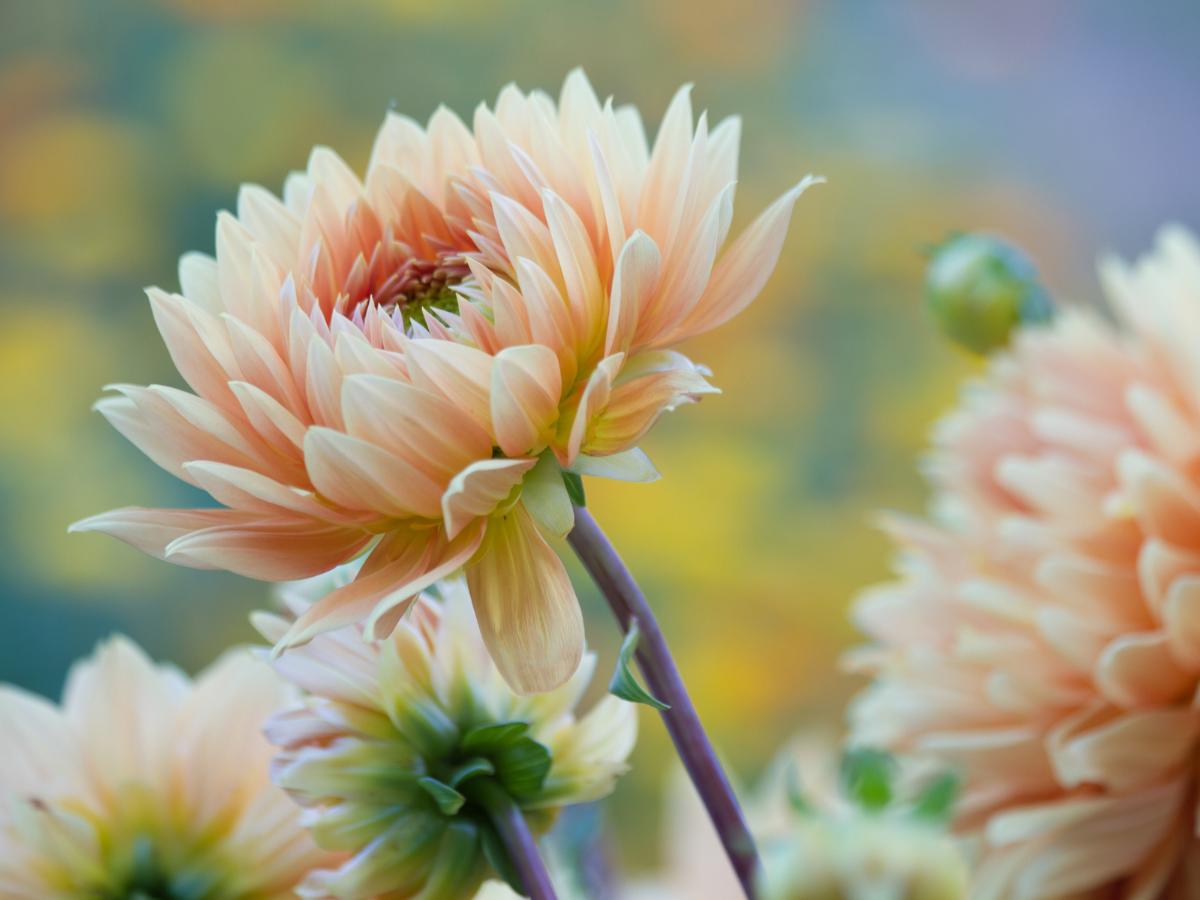
Native to Mexico and Central America, Dahlias are tuberous-rooted plants that come in a variety of colors, sizes, and shapes.
The plant grows to about 6 feet tall and blossoms to produce pinwheel-shaped flowers. The flowers are categorized into about 10 different groups, including decorative, cacti, pompon, and waterlily.
There are different cultivars, so plant and flower sizes may vary, ranging from compact ones to large plate-sized blooms.
Dahlias thrive in full sun to partial shade and bloom from July to September. Their ideal plant hardiness zones are between zones 8 and 11 and may require some shading during the cold winter weather.
10. Coneflower
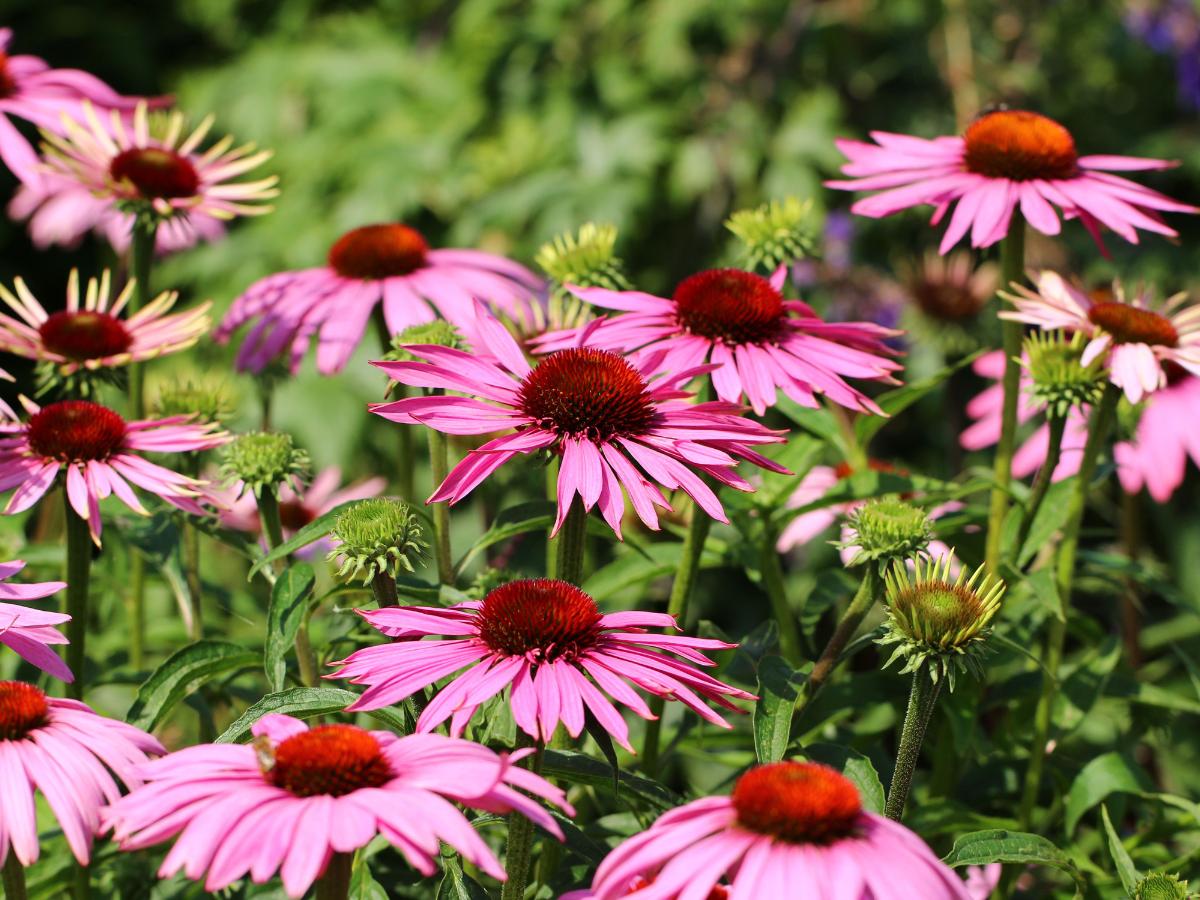
Echinacea purpurea, also known as the coneflower, is a clump-forming plant with daisy-like flowers that are mainly pink. The plant blooms from June to September, providing your space with a lush color. Its mature growth size is between 2 to 5 feet, and the plant will readily rebloom.
Native to North America, this plant thrives in hardiness zones 3 – 9 and in well-draining soil with average fertility. One of the things that makes coneflower a good addition to your fall garden is its ability to adapt to harsh conditions, including heat, poor humidity, and drought.
11. Joe Pye Weed
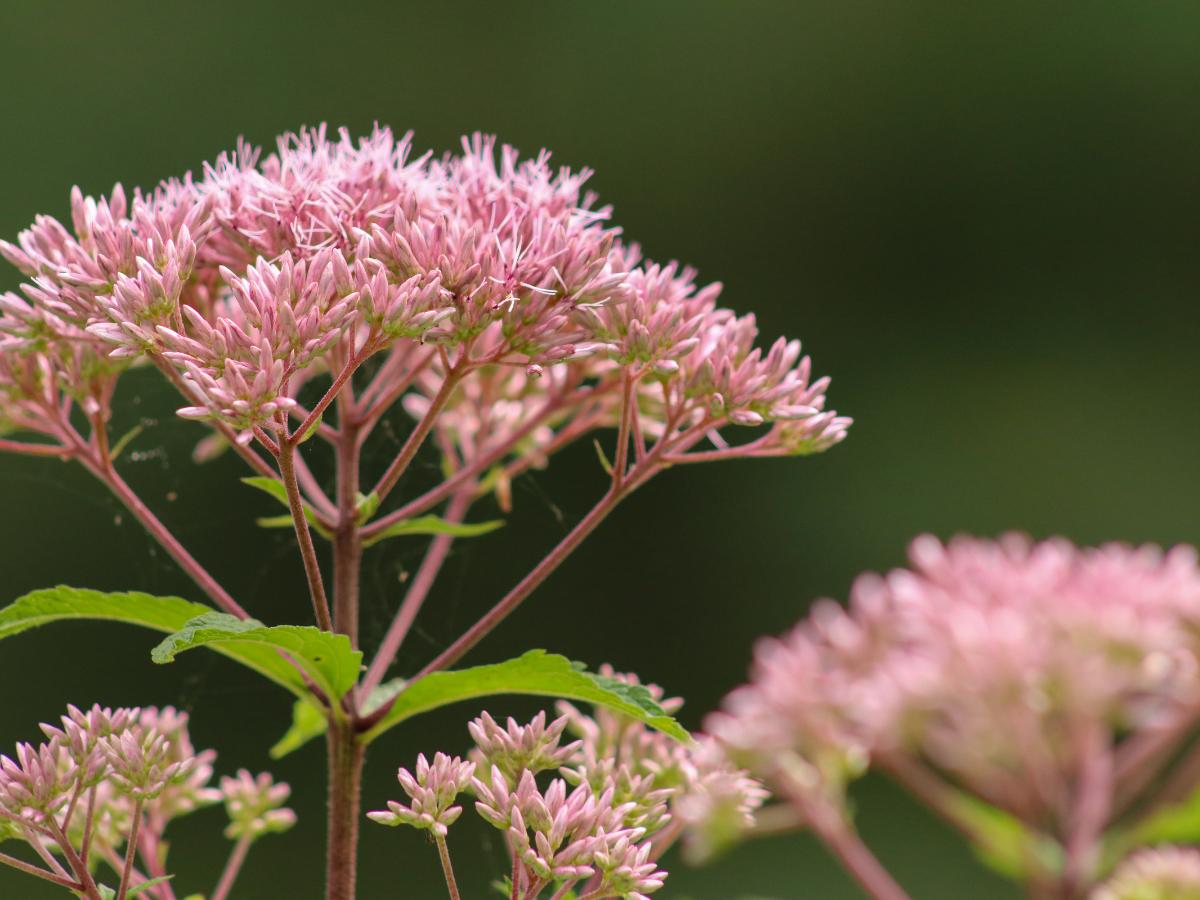
Talking of hardy plants, perennials don’t get tougher than the Joe Pye weed! This plant can withstand almost anything from tough weather conditions to animal attacks; even a little trampling on will not phase it.
While its main variety grows to 6 to 7 feet, there are shorter variants available that grow to about 3 feet. The pye weed loves nutrient-rich, well-draining soils and plenty of sunlight. Its most unique feature is its large, showy heads of flowers that come in whitish-purple.
Sometimes, this plant can be invasive, so allow space to ensure it doesn’t encroach on other plants.
12. Red Valerian
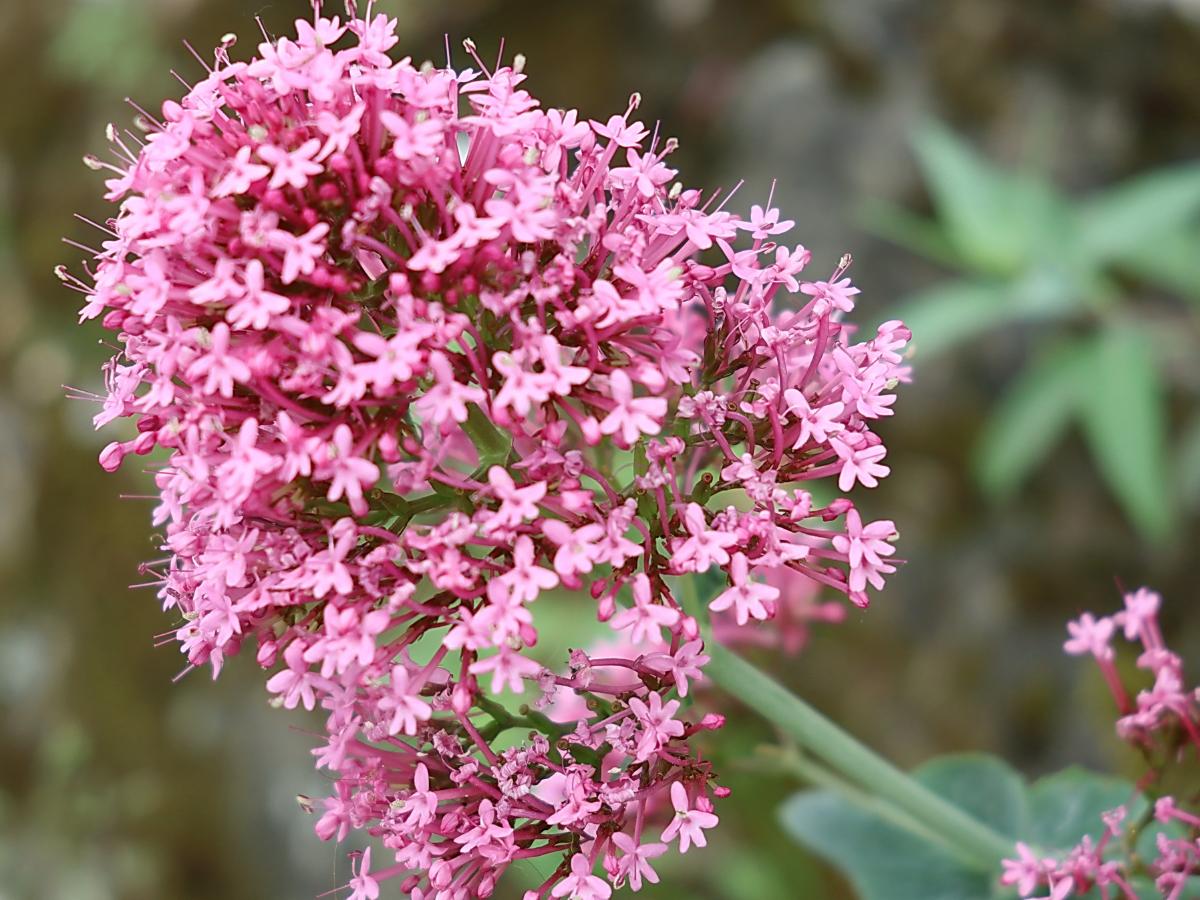
Red valerian is a perennial native to the Mediterranean region that blooms to produce beautiful clusters of tiny trumpet-shaped flowers that come in shades of pink to carmine. The fleshy blue-green leaves of the plant also add to its beauty.
A mature plant grows to about 18 inches 3 feet, and blooming starts from May to September. While it requires moist, well-drained soil, the Red Valerian performs well even in dry soils; however, it may be impacted by high heat and humidity.
Grow the plant in a sunny area with well-draining soil. This flower makes a good addition to cottage gardens and naturalized areas even though it can be grown as a ground cover.
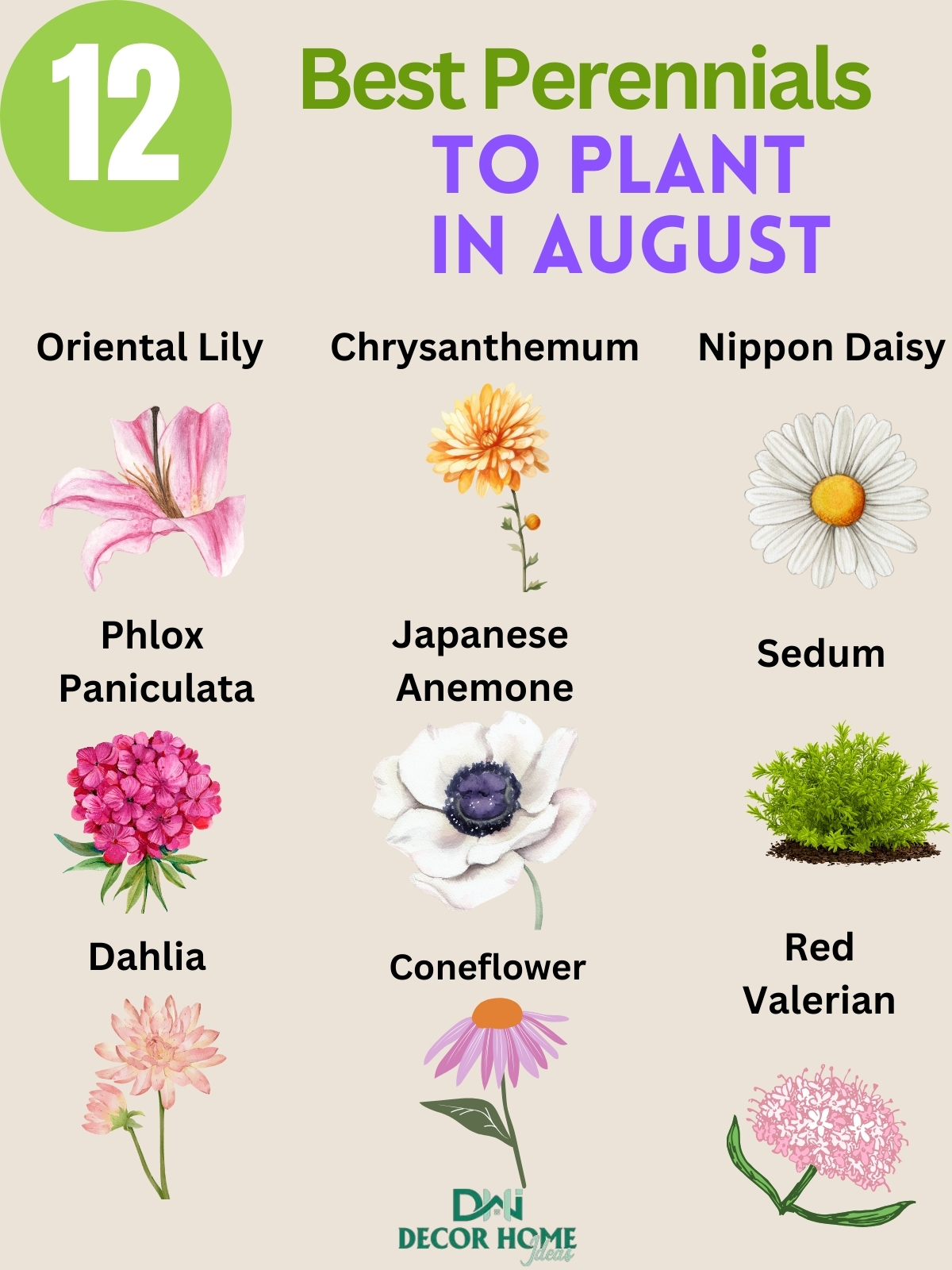
Extend your garden’s beauty into fall with these stunning perennials.
Chrysanthemums and Nippon daisies bring classic autumn charm, while dahlias and oriental lilies add bold color.
Japanese anemones and coneflowers attract pollinators, and sedum provides late-season texture.
Phlox paniculata and red valerian ensure a vibrant, flourishing landscape well into the cooler months!

